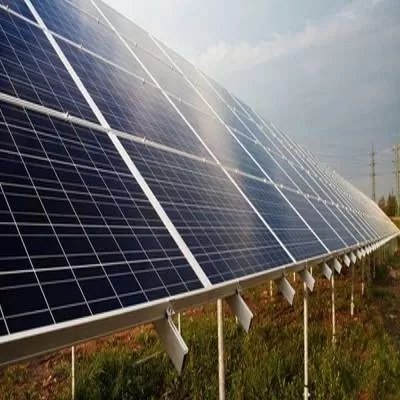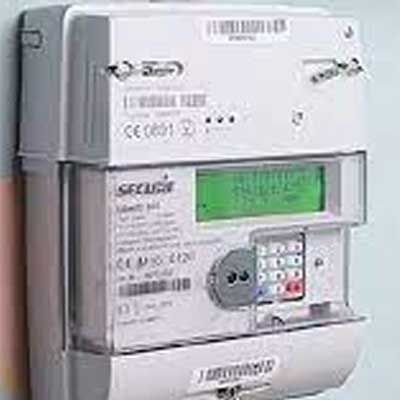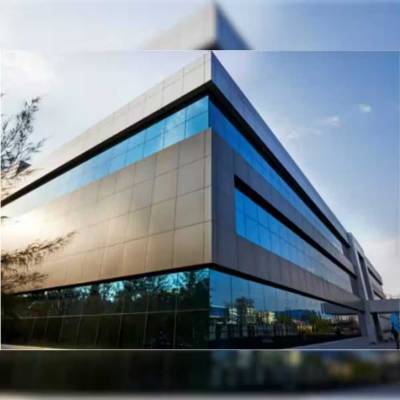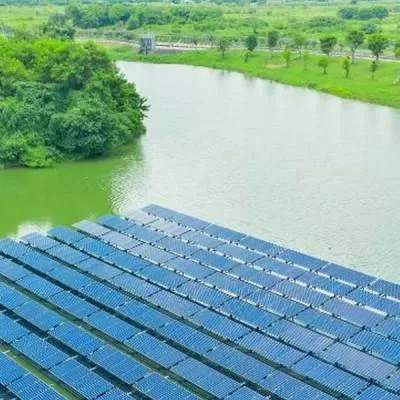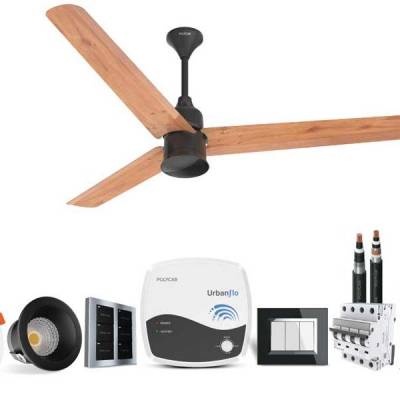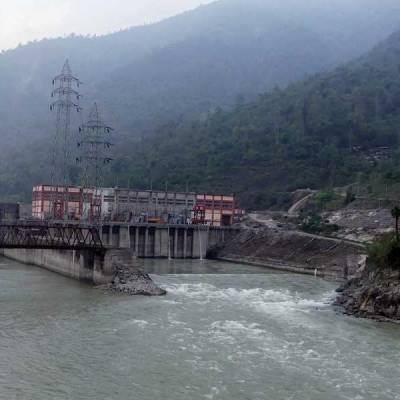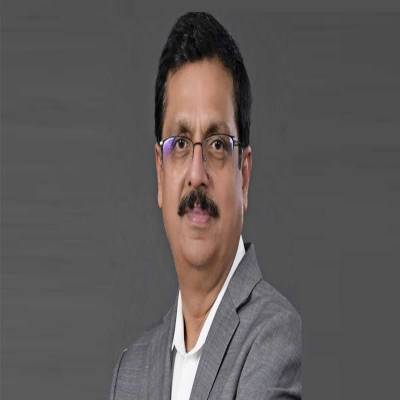- Home
- Infrastructure Energy
- POWER & RENEWABLE ENERGY
- Power plus
Power plus
Maharashtra State Electricity Distribution Company Ltd (MSEDCL) supplies electricity to more than 2.5 crore consumers across the state excluding the island city of Mumbai. Over the years, the state has taken up major reforms in the fields of capacity addition, loss reduction and demand side management. Various activities like agriculture feeder separation and single phasing schemes for demand side management have been taken up. Mass meter replacement, implementation of input-based distribution franchise model in high loss areas, feeder-wise load shedding, massive theft detection drives by establishing special squads assisted by special police stations, successful implementation of various infrastructure development schemes and the use of different IT initiatives are some of the major initiatives taken up for loss reduction and improvement in consumer service. Planning an ambitious capacity addition to meet the demand in the next five years by sourcing power through various projects of Mahagenco, central sector and private generators have started yielding results. As a result, Maharashtra has almost emerged as a load shedding -free state. Implementation of various capex schemes or infra plans and successfully achieving the collection efficiency of 97-98 per cent, MSEDCL has been able to reduce its AT&C losses from 26.08 per cent in FY2007-08 to 18.68 per cent in FY2012-13. It has also strengthened its distribution network because of which the transformer failure rate has reduced from 16 per cent in FY2005-06 to 7 per cent in FY2012-13.
Loss reducing measures: MSEDCL implemented an input-based distribution franchisee model in Bhiwandi in 2007; and after its successful implementation, it extended this model in other loss making areas like Nagpur, Aurangabad and Jalgaon. The results in these cities were quite encouraging. The utility started implementing feeder wise Distribution Commercial Loss (DCL) assessment concept, which envisages higher load shedding in areas where recovery is less and distribution losses are high. This has sucessfully reduced losses and increased recovery so that they can have uninterrupted power supply.
With such efforts and improved power availability, almost 82 per cent area is load shedding-free. The industries are now supplied with power for 24x7 hours with no load shedding on industrial feeders. Agriculture consumers get electricity for eight hours in the day and 10 hours in the night by rotation. The present demand of MSEDCL is about 14,000 MW and it is able to supply about 13,500 MW on an average. Hence, the load shedding of 500 MW to 750 MW is carried out only on such feeders where DCL is more than 42 per cent.
All efforts are being made to bring down the DCL percentage of these feeders, so that areas fed by them also become load shedding- free. In the last five years, the demand-supply gap of electricity has been reduced from 18 per cent to 3 per cent. Thus, Maharashtra has been able to make power available to all those who are willing to pay. Capacity expansion: Considering that the overall energy demand of the state is increasing at 10 per cent per annum, MSEDCL has planned an ambitious capacity addition programme by sourcing power from projects of Mahagenco and central sectors (NTPC, NHPCL). Further, in line with the Electricity Act 2003 and National Tariff Policy to promote competition in the power sector, MSEDCL has also sourced private power through competitive bidding from the projects of Adani Power, India Bulls, JSW Energy and Tata Power. Apart from this, it has also tried power through non-conventional energy sources like solar, wind, bagasse etc. Accordingly, it has planned capacity addition of 4,410 MW in 2013-14, 4,600 MW in 2014-15, 614 MW in 2015-16, 1,550 MW in 2016-17, 928 MW in 2017-18 and 1,570 MW in 2018-19. With an aim to provide reliable and quality power, MSEDCL formulated a Rs 11,000 crore worth infrastructure plan (Phase-I) in the year 2007. It created a record of the fastest commissioning of 606 sub-stations and 68,078 distribution transformers along with associated HT/LT Lines. With its encouraging success, the utility decided to implement infrastructure plan (Phase-II), which is focussed on various capital works, with the objective of releasing new connections including agriculture during the period 2013-14 to 2015-16. Planned with a capital cost of Rs 6,500 crore, this scheme envisages 412 sub-stations and 36,237 distribution trans¡formers along with associated HT/LT lines which are to be added in the system by 2015-16.
Rural woes: In order to provide electricity to all rural households, enable electrification of villages and to provide electric connection to below poverty line households, Government of India launched the Rajiv Gandhi Gramin Vidyutikaran Yojana (RGGVY) under the Tenth and Eleventh Five-Year Plan which met with immense success. Four districts and the other 29 districts with a scheme cost of Rs 86.24 crore and Rs 729.66 crore respectively were covered. In view of this success, MSEDCL made some more suggestions to the government.
It suggested that the RGGVY should cover hamlets and also the revenue villages which have been included in municipalities. The power bill subsidy should be given to BPL families electrified under RGGVY schemes for first five years. Capital subsidy is required under the Twelfth Plan for creation of additional infrastructure for release of balance BPL connections, to cater the load of prospective Above Poverty Line (APL) rural households and public places and establishment of new 33/11 KV substations, augmentation of distribution transformers in already covered villages in the Tenth and Eleventh Plan. Power up: Maharashtra has shown a remarkable progress in the implementation of Restructured Accelerated Power Development and Reforms Programme (R-APDRP) sanctioned by the Government of India. The work has been initiated (Part A) in 130 towns having a population of more than 30,000 (census 2001). The asset mapping and consumer indexing for 32.5 lakh consumers has been completed in 106 towns, which are also integrated with data centres. All out efforts are being made to complete the works in the balance 24 towns. Out of 106 towns, 59 towns have been declared as ´Go-live.´As far as R-APDRP Part-B is concerned, the work of establishing new substations (137), power transformers (55), HT lines (4,149 km), LT lines (2,970 km) and distribution transformer related works (9,915 nos) has been envisaged. Out of this, 23 substations, 28 power transformers, 313 km of HT lines, 197 km of LT lines and 3,161 distribution transformers have been commissioned up to July 2013. In order to improve consumer service, MSEDCL has initiated major IT implementation schemes such as call centres, web-based or online payment, payment through RTGS or NEFT, consumer facilitation centre (CFC), automatic teller payment (ATP), open access and automatic meter reading.Considering the circumstances today, achievements like these are nothing short of outstanding in nature. With a booming economy in the country, power demand is on the rise at a greater rate as opposed to power availability. Notwithstanding this, MSEDCL has made a headway and has the confidence to aim high.
About the author:
MK Deore, Director (Operations), MSEDCL, Mumbai, is associated with key projects in infrastructure planning, Gaothan Feeder Separation, Rajiv Gandhi Gramin Vidyutkaran Yojana and APDRP. With a rich experience of 34 years, his expertise lies in project implementation and operations and EHV substations design, construction of EHV lines, etc.
MK DEORE highlights the system strengthening efforts and modernisation reforms in MSEDCL. Maharashtra State Electricity Distribution Company Ltd (MSEDCL) supplies electricity to more than 2.5 crore consumers across the state excluding the island city of Mumbai. Over the years, the state has taken up major reforms in the fields of capacity addition, loss reduction and demand side management. Various activities like agriculture feeder separation and single phasing schemes for demand side management have been taken up. Mass meter replacement, implementation of input-based distribution franchise model in high loss areas, feeder-wise load shedding, massive theft detection drives by establishing special squads assisted by special police stations, successful implementation of various infrastructure development schemes and the use of different IT initiatives are some of the major initiatives taken up for loss reduction and improvement in consumer service. Planning an ambitious capacity addition to meet the demand in the next five years by sourcing power through various projects of Mahagenco, central sector and private generators have started yielding results. As a result, Maharashtra has almost emerged as a load shedding -free state. Implementation of various capex schemes or infra plans and successfully achieving the collection efficiency of 97-98 per cent, MSEDCL has been able to reduce its AT&C losses from 26.08 per cent in FY2007-08 to 18.68 per cent in FY2012-13. It has also strengthened its distribution network because of which the transformer failure rate has reduced from 16 per cent in FY2005-06 to 7 per cent in FY2012-13. Loss reducing measures: MSEDCL implemented an input-based distribution franchisee model in Bhiwandi in 2007; and after its successful implementation, it extended this model in other loss making areas like Nagpur, Aurangabad and Jalgaon. The results in these cities were quite encouraging. The utility started implementing feeder wise Distribution Commercial Loss (DCL) assessment concept, which envisages higher load shedding in areas where recovery is less and distribution losses are high. This has sucessfully reduced losses and increased recovery so that they can have uninterrupted power supply. With such efforts and improved power availability, almost 82 per cent area is load shedding-free. The industries are now supplied with power for 24x7 hours with no load shedding on industrial feeders. Agriculture consumers get electricity for eight hours in the day and 10 hours in the night by rotation. The present demand of MSEDCL is about 14,000 MW and it is able to supply about 13,500 MW on an average. Hence, the load shedding of 500 MW to 750 MW is carried out only on such feeders where DCL is more than 42 per cent. All efforts are being made to bring down the DCL percentage of these feeders, so that areas fed by them also become load shedding- free. In the last five years, the demand-supply gap of electricity has been reduced from 18 per cent to 3 per cent. Thus, Maharashtra has been able to make power available to all those who are willing to pay. Capacity expansion: Considering that the overall energy demand of the state is increasing at 10 per cent per annum, MSEDCL has planned an ambitious capacity addition programme by sourcing power from projects of Mahagenco and central sectors (NTPC, NHPCL). Further, in line with the Electricity Act 2003 and National Tariff Policy to promote competition in the power sector, MSEDCL has also sourced private power through competitive bidding from the projects of Adani Power, India Bulls, JSW Energy and Tata Power. Apart from this, it has also tried power through non-conventional energy sources like solar, wind, bagasse etc. Accordingly, it has planned capacity addition of 4,410 MW in 2013-14, 4,600 MW in 2014-15, 614 MW in 2015-16, 1,550 MW in 2016-17, 928 MW in 2017-18 and 1,570 MW in 2018-19. With an aim to provide reliable and quality power, MSEDCL formulated a Rs 11,000 crore worth infrastructure plan (Phase-I) in the year 2007. It created a record of the fastest commissioning of 606 sub-stations and 68,078 distribution transformers along with associated HT/LT Lines. With its encouraging success, the utility decided to implement infrastructure plan (Phase-II), which is focussed on various capital works, with the objective of releasing new connections including agriculture during the period 2013-14 to 2015-16. Planned with a capital cost of Rs 6,500 crore, this scheme envisages 412 sub-stations and 36,237 distribution trans¡formers along with associated HT/LT lines which are to be added in the system by 2015-16. Rural woes: In order to provide electricity to all rural households, enable electrification of villages and to provide electric connection to below poverty line households, Government of India launched the Rajiv Gandhi Gramin Vidyutikaran Yojana (RGGVY) under the Tenth and Eleventh Five-Year Plan which met with immense success. Four districts and the other 29 districts with a scheme cost of Rs 86.24 crore and Rs 729.66 crore respectively were covered. In view of this success, MSEDCL made some more suggestions to the government. It suggested that the RGGVY should cover hamlets and also the revenue villages which have been included in municipalities. The power bill subsidy should be given to BPL families electrified under RGGVY schemes for first five years. Capital subsidy is required under the Twelfth Plan for creation of additional infrastructure for release of balance BPL connections, to cater the load of prospective Above Poverty Line (APL) rural households and public places and establishment of new 33/11 KV substations, augmentation of distribution transformers in already covered villages in the Tenth and Eleventh Plan. Power up: Maharashtra has shown a remarkable progress in the implementation of Restructured Accelerated Power Development and Reforms Programme (R-APDRP) sanctioned by the Government of India. The work has been initiated (Part A) in 130 towns having a population of more than 30,000 (census 2001). The asset mapping and consumer indexing for 32.5 lakh consumers has been completed in 106 towns, which are also integrated with data centres. All out efforts are being made to complete the works in the balance 24 towns. Out of 106 towns, 59 towns have been declared as ´Go-live.´As far as R-APDRP Part-B is concerned, the work of establishing new substations (137), power transformers (55), HT lines (4,149 km), LT lines (2,970 km) and distribution transformer related works (9,915 nos) has been envisaged. Out of this, 23 substations, 28 power transformers, 313 km of HT lines, 197 km of LT lines and 3,161 distribution transformers have been commissioned up to July 2013. In order to improve consumer service, MSEDCL has initiated major IT implementation schemes such as call centres, web-based or online payment, payment through RTGS or NEFT, consumer facilitation centre (CFC), automatic teller payment (ATP), open access and automatic meter reading.Considering the circumstances today, achievements like these are nothing short of outstanding in nature. With a booming economy in the country, power demand is on the rise at a greater rate as opposed to power availability. Notwithstanding this, MSEDCL has made a headway and has the confidence to aim high. About the author: MK Deore, Director (Operations), MSEDCL, Mumbai, is associated with key projects in infrastructure planning, Gaothan Feeder Separation, Rajiv Gandhi Gramin Vidyutkaran Yojana and APDRP. With a rich experience of 34 years, his expertise lies in project implementation and operations and EHV substations design, construction of EHV lines, etc.


